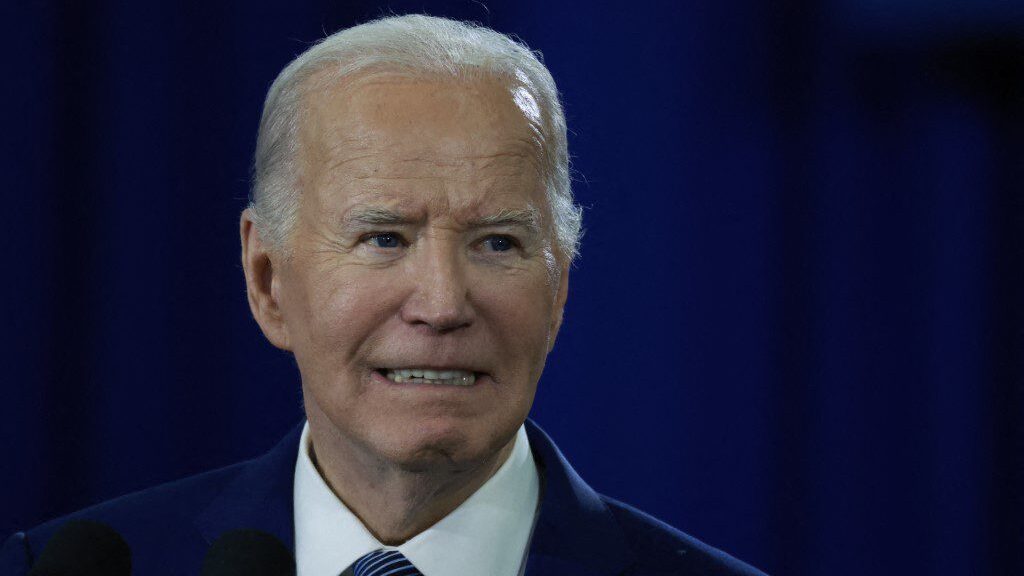Three times in the past 40 years have Republican presidents signed tax reforms into law. Contrary to what the Left likes to tell us, these reforms have reduced the tax burden on all Americans, which is the reason why no Democrat president has dared to fully reverse the Republican tax cuts.
That may end if Joe Biden is re-elected. In his recently released budget for the 2025 fiscal year, the president calls for substantial tax increases on both corporations and individuals. The Tax Foundation, a relatively neutral think tank in Washington, DC, has compiled the tax hikes and analyzed their macroeconomic effects. Here are the most aggressive requests for higher taxes:
- An increase in the corporate income tax from 21% to 28%—a major but not complete reversal of the cut to this tax that President Trump got passed seven years ago;
- An increase in the low-rate punishment tax, a.k.a., the tax that neutralizes lower taxes on certain assets when those assets are moved to a low-tax jurisdiction;
- A higher top tax rate on personal income, 39.6%—this is a full reversal of Trump’s tax reform, which lowered the top rate to 37%;—and
- Substantially higher taxes on capital gains and so-called qualified dividends for high-income earners.
Since the Tax Foundation has run a simulation on the macroeconomic effects of these and other changes to the federal tax code, I am not going to delve into that part. Their conclusion, though dicey due to its long-term nature, is a decline in real GDP by 2.2%. This means that at the end of the period they analyze, GDP will be $97.80 for every $100 it would have been without Biden’s tax hikes.
For a host of reasons, I am always skeptical of long-term modeling, but a relatively simple analysis such as that from the Tax Foundation is often better than those based on very complex models. Therefore, I have no real problem with their predicted reduction in GDP, but it is worth noticing, as Dan Mitchell does over at the Center for Freedom and Prosperity, that there is a major limitation to the Tax Foundation’s forecast. The forecast “does not quantify or estimate the economic damage from higher spending.” Therefore, Mitchell explains, “the actual consequences of Biden’s proposed budget surely would be even worse” than what they are if we focus only on the tax hikes.
Mitchell is right on the money. As I showed in my book Industrial Poverty, when government consumes more than 40% of GDP, economic growth slows down permanently. Therefore, Biden’s combination of higher taxes and more spending is a ‘double whammy’ for the U.S. economy.
It is crucial to understand the negative economic consequences of the Biden budget, but the most hard-core part of the Left does not care about economic growth. If we really want to end this constant push from the Left to grow government, we have to address the ideological underpinnings of their arguments.
At the heart of the left’s endless demands for higher taxes, we find the notion that the ‘rich’ are not paying their ‘fair share.’ President Biden is a passionate proponent of this idea, as he demonstrated in 2021, 2023, and again last month.
Underlying the ‘fair share’ argument is the notion that differences in income are immoral. This idea, in turn, is based on Marxist economic theory and its labor theory of value. Higher incomes—originally capital-based earnings but generalized over time to apply to higher income from all sources—are unjustifiable because they are not founded in the ‘true’ labor value of what the income earner produces.
In today’s American debate over ‘fair share’ taxation, nobody draws on Marx to win the argument, but that does not mean their arguments are not based in Marxism. It is worth remembering this, because when the ‘fair share’ proponents are asked to specify what a ‘fair share’ is, they can never quantify it. The reason for this is that the only justifiable definition—according to the theory behind the ‘fair share’ argument—is ‘everything.’
In short: those who say the ‘rich’ should pay their ‘fair share’ cannot settle for less than 100% of their income above the labor value of their work, lest they violate the very theory upon which their argument is based.
For practical purposes, though, let us try to define the ‘fair share’ in a somewhat more practical way. Suppose that we simply ask people to take responsibility for the funding of government in proportion to their share of total income made in the economy. To take an example: if the top 1% of all income earners make 22% of total personal income, and they pay 22% of all federal income taxes, then they are paying their fair share.
If their tax share was lower than 22%, the practical fair-share argument says that it would be justifiable to raise taxes on them. By the same token, if their share of total taxes paid is higher than 22%, they are exceeding their fair share and deserve a tax cut.
Figure 1 illustrates this fair-share argument for the top 50% of all income earners in America. It aggregates the income groups from the top 0.001% out to the top 50%. The ratios reported for each column are the ratios of tax and income shares for that income group. To take one example, the number 189.2 for the top 1%, gray column, means that for every $100 that this income group would pay in taxes according to our fair-share definition, they actually pay $189.20.
Gray columns represent 2016, while green columns represent 2018. Between those two years is the Trump tax reform:
Figure 1

It is worth noting that the green columns are a bit taller than the gray ones for most of the income groups. The absolute top group, o.oo1% of all income earners, saw their tax burden rise from 161 (in other words their actual tax share being 61% higher than their justifiable share) to 172.5 (overpaying taxes by 72.5%).
This group is so small that it consists of no more than 1,000-1,200 taxpayers, but it is still worth noting that the Trump tax reform increased their tax burden—and worsened the unfairness in how much taxes they have to pay. The same holds true if we zoom out to the 0.01% or the 10-12,000 highest-earning taxpayers.
In fact, the entire top 1% of all taxpayers got an increased tax burden thanks to Trump’s tax reform. If we go all the way out to include the top 50% of all taxpayers, we notice that they are left with at least the same tax-burden ratio after Trump’s tax reforms as they had before the reform.
With these numbers in mind, there are two ways to look at Biden’s tax-hike plan: the greedy way and the Marxist way.
If his motive is government greed, then should he not go after more taxes from everyone? The fact that Biden spares the lower-income taxpayers from a heavier burden means that he has an ideological agenda behind his tax hikes. In other words, when Joe Biden calls for the ‘rich’ to pay their ‘fair share,’ he is asking people who already vastly overpay their fair share to chip in even more money. He would like the green columns to grow even taller compared to the gray columns.
Since Biden has no definition of ‘fair share’ to offer, anyone concerned with the economic consequences of raising taxes—whether on ‘the rich’ or in general—should keep in mind that behind the ‘fair share’ argument lies Marxist economic theory. When put to work under the Soviet Union, that theory destroyed the lives of hundreds of millions of people across the Eurasian continent, from Saxony to Sakhalin.
The most likely explanation for Biden’s pursuit of higher taxes is that it is a combination of greed and ideology. Since government greed does not look too good on television, it is easier to rely on the Marxist fair-share argument: no matter how much more taxes the ‘rich’ pay, it is never enough to be ‘fair.’





